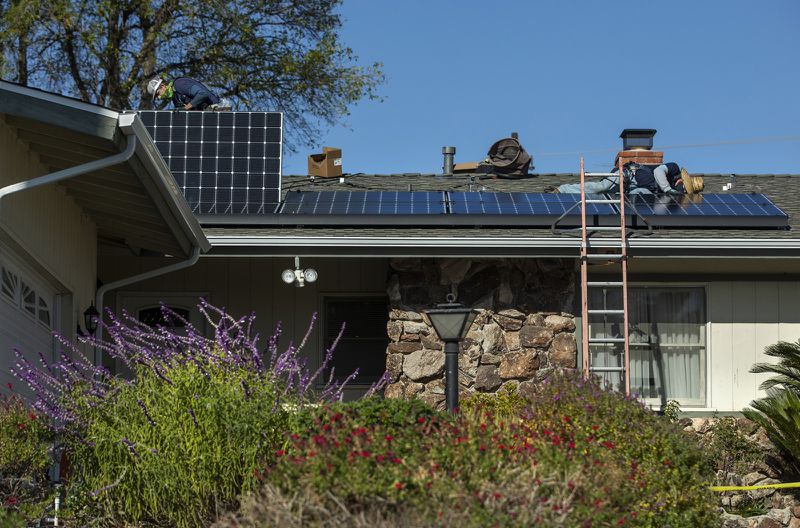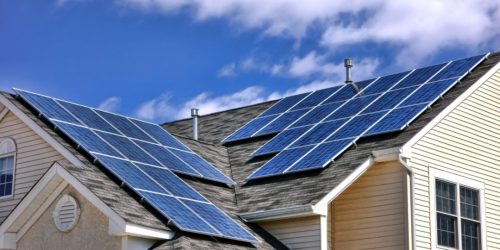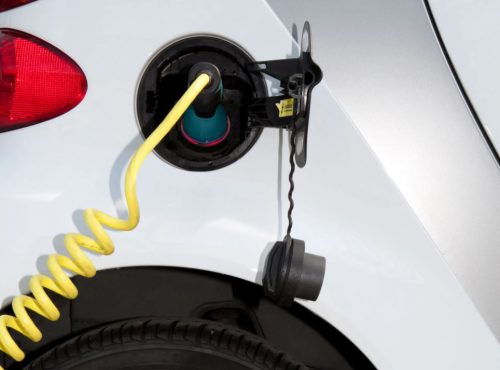By MICHAEL COHEN

It is time for electric utilities to reinvent themselves with a new business model, owning rooftop solar rather than solar farms.
Telephone companies reinvented themselves in the last couple of decades when mobile phones wiped out the pay phone and most residential landline business. The electric industry must adapt, in the same way. Distributing power in the form of rooftop and community solar, coupled with batteries, should provide a considerable portion of our energy needs.
Homes, apartments, condominiums, schools, churches, warehouses, and retail stores could have solar on their roofs and batteries on the wall. Parking lots could be covered with solar to provide power, shade cars, and charge electric vehicles; lakes and retention ponds could have floating areas of community solar for those that can’t have rooftop solar.
Utilities understand that they must move to renewable energy, because of climate change and economics. Solar is more affordable than fossil fuel in the long term. This is a giant leap, but utilities are still wed to the industrial concept of the last century. Their model is to have centralized power production controlled by utilities with large transmission lines moving the power to cities and distribution lines crisscrossing the network of end users.
We should applaud the Orlando Utilities Commission for planning to go “Net Zero” by 2050 in their adopted Electric Integrated Resource Plan (EIRP).
The plan developed by Siemens estimates that providing enough power would “require 50,000 acres of land or, for scale and context, approximately 69% of the land area of the City of Orlando,” If Orlando is a model for the rest of Florida, almost all rural land in Florida will be solar farms.
This would also mean that many thousands of miles of new electric transmission lines will crisscross Florida on new rights-of-way. These are the huge metal structures that nobody wants near their home and are potential hazards during hurricanes. Do you remember Joni Mitchell’s 1970s song “Big Yellow Taxi”, in which the first line was, “They paved paradise and put up a parking lot”? Well, change the parking lot to a solar farm.
Florida utilities recognized that they need huge areas of land and got the Legislature to pass and the governor signs a Renewable Energy bill that requires solar facilities to be a permitted use in all agricultural land use categories in a local government’s comprehensive plan and all agricultural zoning districts within an unincorporated area. The law means that citizens or local government cannot prohibit solar farms in rural or agricultural areas.
Solar United Neighbors of Florida, a nonprofit, facilitated 2,000 homeowners who collectively added 20 megawatts of solar power in five years via 70 co-ops. Through the co-ops, homeowners and businesses pay for solar and batteries to be installed on their property. Federal tax credits encourage people to add solar and batteries; nonprofits should have access to rebates similar to the tax credits. This, however, will still be a small fraction of the potential for rooftop solar in Florida.
Rooftop solar will not put electric utilities out of business.
Because the supply of electricity will be close to the consumer there will be less need for big transmission lines and huge solar farms. Having solar and batteries distributed throughout the service territory will limit outages from hurricanes. Intermittent clouds that are a problem for large solar farms will be mitigated by the disbursement of roof-top solar.
Yes, there will be some need for large solar farms to power cities. High-rise buildings, tree-shaded properties, manufactured houses and other atypical properties won’t be able to produce substantial power with solar, but they can still house batteries.
The cheapest kilowatt hour is the one not needed. In the next couple of years, there will be a lot of money flowing from the federal government for energy efficiency. The utilities should set up energy-efficiency businesses to use this money and help homeowners, renters, commercial property owners, and managers end the waste of electricity and decrease the need for solar farms.
If the only tool available is a hammer, every problem will look like a nail. If the only tool electric utilities seem to have is centralized power production sent via high-voltage transmission lines, then rural Florida will look like glass skyscrapers laying down in a field. Go solar — but use a rooftop model first.
Source: Michael Cohen,(co-founder of Solar United Neighbors of Florida), orlandosentinel.com
Image credit: Mel Melcon/Los Angeles Times/TNS




